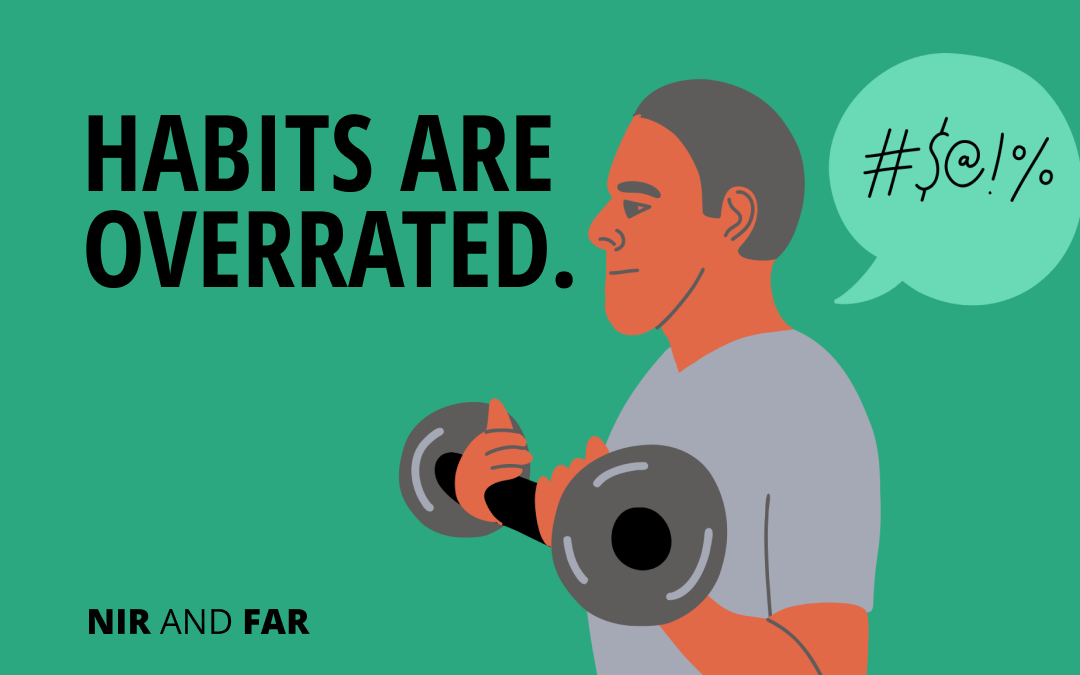These days, when someone says they want to form a “habit,” what they often mean is that they want to make drudgery effortless. That is, they don’t want to actually do the work, rather they want to have done it—past tense.
- “I want to build a writing habit” really means, “I hate writing, but I’ve always wanted to write a book.”
- “I want to make exercise a habit” is code for: “I hate exercising, but I want to have already worked out so I can feel and look better.”
- “I want to make a habit of getting up early,” translates into, “I want to effortlessly wake up, even though I can’t stand it. Now, where’s my coffee!?!”
The Habit Trap
Let’s start with answering the question, “What is a habit?”
A habit is an impulse to do a behavior with little or no conscious thought.
Brushing your teeth, riding a bicycle, taking a shower—each are actions you can do without really thinking, evidenced by the fact you can think of something else while you’re doing them.
But not all behaviors can become habits. Many behaviors require conscious effort to perform or improve upon.
For instance, if you’ve already mastered a song on a musical instrument, you can play it with little thought or effort—but learning the song before it’s memorized requires deliberate practice.
Getting better often requires focusing intensely and consciously on your mistakes, the very opposite of a habit.
People get caught in the habit trap when they mistakenly believe a behavior should be a habit, but despite their expectation, it’s still not effortless. Then, instead of blaming the faulty methodology espoused by many books and gurus, they blame themselves and quit.
Routines Before Habits
Before it can become a habit, a behavior must first become a routine. There’s no expectation that a routine is effortless or easy; it just has to get done.
A routine is a series of actions frequently repeated.
While all habits start off as routines, not all routines become habits.
I’ve written two bestselling books and countless articles, and yet, writing is still a slog for me. It’s hard freakin’ work!
It’s never going to become a habit because it will always require conscious thought. And that’s ok!
As long as I know how to deal with the discomfort of writing so I don’t get distracted, I won’t get snared by the habit trap.
The first step is learning to master the internal triggers, such as boredom, fear, and anxiety, which so often accompany a hard task.
The next step is to schedule the time to follow through with the routine.
Timeboxing is one of the most effective means of ensuring you know what you’re going to do and when you’re going to do it.
By letting go of the false notion that everything can be turned into a habit and learning how to persist with routines — and track our progress — we ensure we use the right tool for the job of changing our behavior for good.
Related Articles
- Schedule Maker: a Google Sheet to Plan Your Week
- Habit Tracker Template in Google Sheets
- The Ultimate Core Values List: Your Guide to Personal Growth
- Timeboxing: Why It Works and How to Get Started in 2024
- An Illustrated Guide to the 4 Types of Liars
- Hyperbolic Discounting: Why You Make Terrible Life Choices
- Happiness Hack: This One Ritual Made Me Much Happier

